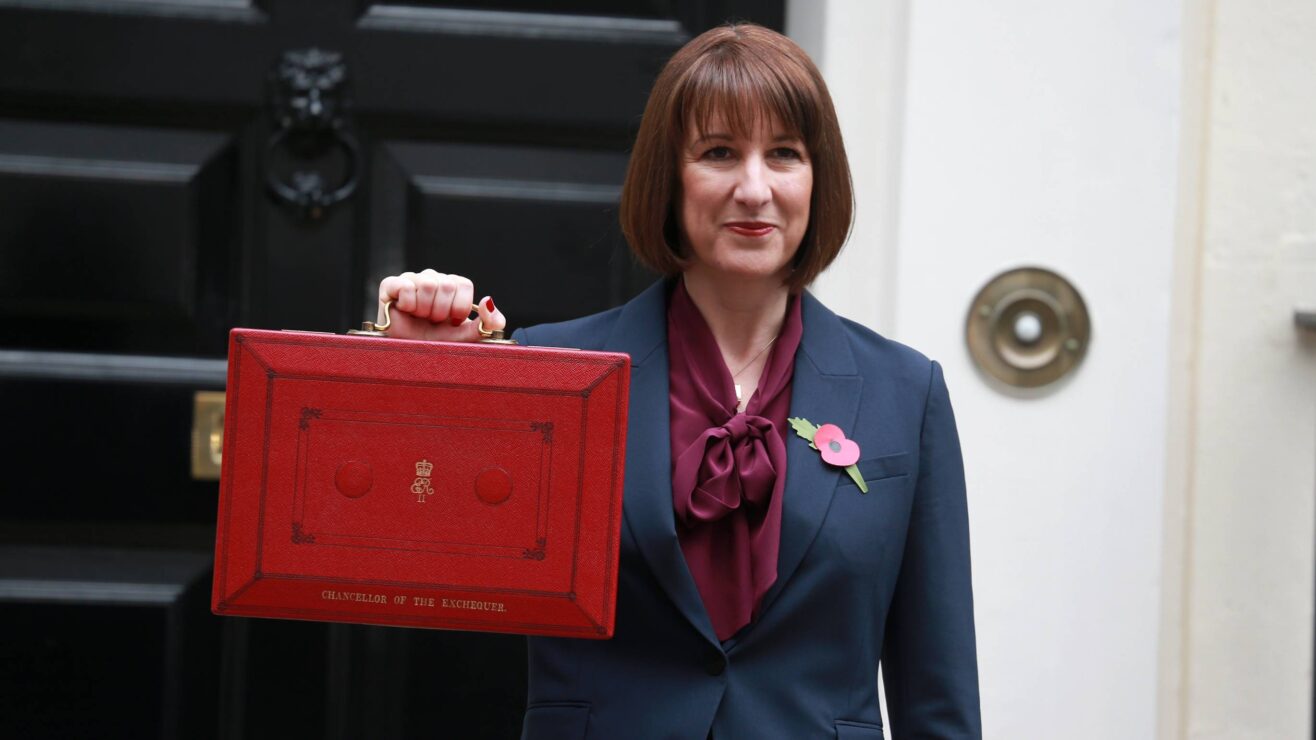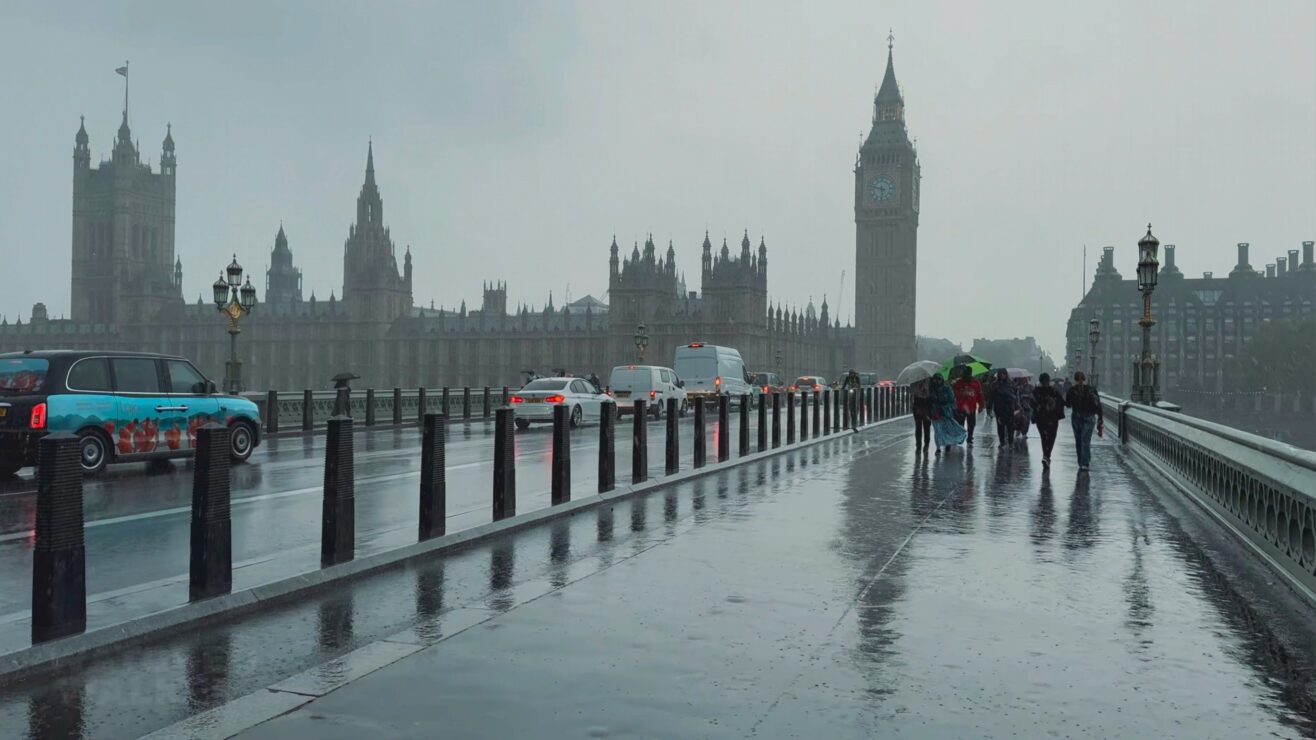When we think of the politics of the nineties the dominant image might be of the New Labour General Election landslide of 1997 under Tony Blair in which Labour won a historic 179 seat majority. But the Conservative Party remained in power for the best part of the decade, under the leadership of Prime Minister John Major, portrayed in the satirical political puppet show Spitting Image as entirely grey.
A recent YouGov poll found that the majority of British people believe that life was better in the nineties and noughties. And indeed, in many ways the nineties did seem to mark a new sense of optimism and possibility. The Cold War had finally ended with the collapse of the Soviet Union, leading historian Francis Fukuyama to argue that the period signified “the end of history” ie the global dominance of liberal democracy and market economics as the most desirable way of organising things and the natural end point of human development. The Internet was born in the nineties, signalling a new golden age of human connectivity and cooperation across borders – for a while at least. And following the political extremes of Thatcher’s Conservatives and Labour in the eighties, the nineties saw moves towards the embracing of “Third Way” political centrism and the construction of a broad coalition of voters for what would become New Labour.
Britain under Major
In 1990 Margaret Thatcher stepped down as leader of the Conservative Party and Prime Minister following an extensive row over the introduction of the unpopular poll tax. John Major, her replacement, who unusually for a post-war Prime Minister did not have a university degree, adopted a somewhat gentler approach, replacing the hated poll tax with council tax and embarking on a programme of public service reform that established a principle that public service users should be viewed as consumers. Major’s Citizens Charter sought to introduce new expectations that public service users should expect a defined standard of service, be able to access information about services, and complain if they did not reach the recognised standard. Internationally, Britain played its role in the Gulf War of 1990-91, a brief and decisive international effort to protect Kuwait from Iraqi aggression under Saddam Hussein.
At home, while Major continued Thatcher’s programme of privatisation, he wanted to take a less abrasive approach to reform and balance private interests with improving public services. His efforts, and lingering suspicion about whether Labour had made sufficient reforms under leader Neil Kinnock, gave Major a narrow election victory in 1992, with a majority of just 21 seats. This was to be the high point of Major’s government, as later that year Britain was forced to withdraw from the Exchange Rate Mechanism after a run on the pound on Black Wednesday, a humiliating episode that destroyed the Conservative reputation for economic competence. From beating Labour in the election, opinion polls showed a healthy lead for Labour from 1992 onwards all the way to the New Labour victory of 1997. For the majority of his second term Major presided over a fractious, weak government, which increasingly came to be dogged by allegations of “sleaze” paving the way for the New Labour landslide victory of 1997.
Before the election in 1992 Major’s government had also signed the Maastricht Treaty which established the European Union, making provision for a future single currency, and greater coordination of security and justice, agricultural policy, and European governance. Negotiations over this treaty reflected the UK’s uneasy relationship with Europe, keen to access the common market for goods and services, but sceptical of anything that looked like greater political integration or threats to the UK’s autonomy. The UK secured an opt out to the social chapter of the Maastricht Treaty which made provision for harmonising social and employment rights across its 12 signatories. Tensions over Europe would dog the Conservative Party for decades to come.
By the end of the eighties, the higher education sector as we know it today had begun to take shape. The first Research Assessment Exercise had taken place in 1986, primarily so that the University Grants Committee could draw from an evidence base in its decision about where to allocate limited research funding resources. In the great tradition of higher education choosing to regulate itself as a means to stave off external interference a new system of quality assessment had been inaugurated in 1990 under the auspices of the Committee of Vice Chancellors and Principals (CVCP), designed to check whether universities were following its existing code of practice.
The 1988 Education Reform Act had set out the legal framework for polytechnics that were under local authority control to incorporate as independent higher education corporations, paving the way for polytechnics to behave more like universities. The Act also established a single University Funding Council to replace the older University Grants Committee. The Student Loans Company had been founded under Thatcher and from 1990 started to issue low-interest loans to students to support their living costs.
The 1992 General Election
The Conservative manifesto for the 1992 General Election is framed in traditional Conservative terms of lowering taxes and promoting personal freedom:
Who will give you the power to choose – to say for yourself what you want? And who will give you the personal prosperity that comes from low taxes – from your own savings, your own pension, your own home? Who will let you build up your own stake in Britain’s success – and pass it on to your children?
Yet the length and detail of the manifesto – of which there were separate manifestos for Wales and Scotland – suggest that Major’s party judged that there was a need to make the argument for continued Conservative government. The 1992 election did not feel like a guaranteed victory. A long section on the European Community, for example, defends the arguments for signing the Maastricht Treaty, celebrates the opt-out from the social chapter, while setting out a programme for Britain’s upcoming presidency of Europe.
A section on science and innovation points to a real-terms increase in the science budget by 24 per cent since the Conservatives came to power in 1979 and celebrates the quality of UK science:
British science has an unrivalled reputation for ground-breaking research. We believe in investing in scientific research because it enriches the quality of our lives and provides the feedstock of industrial innovation.
Despite these warm words, the actual policies proposed are rather limited, with a pledge to continue to support the science base, and encouragement of technology transfer between universities and polytechnics, and industry.
Under the heading of “opportunity for all” the preamble places emphasis on standards in education, but promises a continued programme of higher education expansion: “We are committed to widening opportunities without compromising academic standards. We will continue to expand higher education and training.”
The Conservative theme of freeing providers from local authority control continues with a promise to grant autonomy to FE and sixth form colleges.
A “Higher Education” section rehearses the provisions of the 1992 Further and Higher Education Act which had passed in the pre-election wash-up and would be implemented in the summer following the election. Claiming that “Britain maintains the best university system in Europe” and pointing to the sixfold increase in students studying in polytechnics since the end of the sixties, the manifesto celebrates continued increases in student numbers:
By the year 2000, one in three young people will follow full-time higher education courses. Meanwhile, the number of mature entrants to higher education has risen by 65 per cent since 1979. And our universities are attracting increasing numbers of foreign students.
Despite this expansion, the manifesto argues, thanks to the new student loans system “our students enjoy one of the most generous support systems in the world.” The manifesto goes on to pledge to abolish the “artificial ‘binary line’ between universities and polytechnics” and to continue to provide support for students through the expansion of student loans. There is also a line about “new mechanism to ensure that academic standards are maintained in higher education” which refers to the provision of the 1992 Act which put the funding councils – newly constituted as separate higher education funding councils for England, Scotland, and Wales – in charge of assuring higher education quality rather than the CVCP.
The section on HE is followed by a larger section titled “The Training Revolution” suggesting that this was seen as a rather larger concern – given that at the time of the election unemployment remained high and Britain was in an economic recession.
The Labour 1992 manifesto, though shorter, was similarly concerned with reaching out beyond the core vote, reassuring voters that Labour had “down to earth aims” and was not obsessed with state control: “at the core of our convictions is a belief in individual liberty” albeit tempered with “high standards of community provision” and “rights…balanced by responsibilities.”
The manifesto goes on to argue, with resonances with contemporary Labour party policy:
for rights and responsibilities to be exercised fully and fairly, government in Britain as in other industrialised democracies, must work to build prosperity by properly supporting research, innovation, the improvement of skills, the infrastructure and long-term industrial development.
Again with contemporary resonances, in a series of pledges, the Labour manifesto sets out a high level programme of “Immediate Action for National Recovery” which includes housebuilding, public transport, capital allowances for industry, jobs programmes, and investment in skills and education.
In a section titled “We will modernise Britain’s industries” Labour promises to set up a new body, British Technology Enterprises, and a series of Technology Trusts across Britain to help commercialisation, and “building bridges between industries and universities.” There is also a promise of ”a national strategy to promote high-quality science and technology, so that Britain can better anticipate and respond to the challenges of the future.”
Interestingly, given the context of Conservative agenda for higher education reform, the Labour manifesto has nothing further to say on higher education – the section on education is focused on raising standards in schools. Though there is a pledge, also made in the Liberal Democrat manifesto, to raise spending on education as a proportion of GDP, reflecting a sense in the era of education as a form of public investment.
1992 was the first election fought by the newly formed Liberal Democrats, which emerged from the SDP-Liberal Alliance, and was led by Paddy Ashdown. Once again the liberals sought to find a framing device that would catch the eye of the public and hopefully persuade them to cast their vote differently. In the Liberal Democrat 1992 manifesto this took the form of a notional casting of accounts in which the Lib Dems weighed up the state of the country across the economy, the environment, education, and society.
That education had its own analysis reflected the value placed on it by Lib Dems – one of the few Lib Dem policies that had any cut through in this decade was a pledge to increase income tax by one penny to fund education. Higher education doesn’t appear on either the good or bad side of the “education balance sheet” but the Lib Dems do observe that investment in science and research has fallen as a proportion of GDP (specifically in this case from 0.35 per cent to 0.28 per cent), “not only affecting our higher education system but creating a knock-on effect throughout the British economy.” To remedy this the Lib Dems pledge to increase the government science budget to to 0.35 per cent of GDP “and raise it steadily thereafter.” Like Labour and to a lesser extent the Conservatives the Lib Dems would also invest in technology transfer and commercialisation, establishing regional technology transfer centres.
Unlike Labour and the Conservatives, the Liberal Democrats have quite a lot to say about higher education in the 1992 election, pledging both to grow participation and increase flexibility “because not all students want to follow traditional three-year courses.” The programme includes:
- Increasing the number of students in higher education to two million by the year 2000, particularly focusing on “women, people from minority ethnic and poorer backgrounds, and people with disabilities.”
- More flexible courses through introducing a credit-based system and two-year HE diplomas
- Developing distance learning and franchised provision
- Abolish student loans and restore student access to income and housing support
- Create a new Higher Education Standards Council to assure quality
- Invest in research and create a new humanities research council
Many of these ideas (except, perhaps, for the student funding one) would surface in subsequent HE reforms, particularly under New Labour.
The 1997 General Election
By the time of the 1997 General Election the Conservative government looked exhausted and out of ideas, and Britain was ready to take a spin on a Labour government. But Labour, now under the leadership of Tony Blair had worked hard to rebrand itself as “New Labour”, abandoning its formal “Clause IV” commitment to the common ownership of industry and making efforts to build a broad coalition of voters though adopting a version of US President Bill Clinton’s “Third Way” politics which sought to steer a middle path between fully market-led or social democratic models of doing politics.
In another grand tradition – that of governments setting up independent reviews of higher education ahead of a General Election to avoid any tricky politics that might derail the results – the Conservatives, with Labour support, set up the Dearing committee of inquiry into higher education in 1996, and it had not reported at the time of the election. The terms of reference for the inquiry were set broadly: to make recommendations on how the purposes, shape, structure, size and funding of higher education, including support for students, should develop to meet the needs of the United Kingdom over the next twenty years.
As Rhiannon Birch has written for Wonkhe in her reflections on twenty years since the Dearing Review, it was set up to tackle a tricky political issue, that the ending of the binary divide between universities and polytechnics in 1992 had not addressed wider differentials between the two types of institutions, or the systemic under-funding of the system, which led to vice chancellors threatening to start levying “top up” fees to plug the funding gaps.
The review, reporting after 1997 made recommendations on student funding and finance, teaching and learning, research, lifelong learning, widening participation and much more. But for our purposes, it also created the context in which the political parties discuss higher education in their General Election manifestos.
The Conservative manifesto for the 1997 election focused on defending a record in which they had presided over a major expansion of higher education throughout the eighties and in the first half of the nineties, rehearsed at the start of the manifesto and subsequently in a section on “Lifetime Learning”:
There has been a revolution in further and higher education. Three and a half million people are in further education – up from just half a million in 1979. The number of young people going to university has risen from one in eight to one in three over the same period.
But beyond promising to continue to support research and consult on the outcomes of the Dearing review, the Conservatives do not say much more on the topic.
The Labour Party 1997 manifesto had a laser-like focus on explaining why a vote for New Labour was not only a safe, but an aspirational choice: “New Labour is a party of ideas and ideals but not of outdated ideology. What counts is what works. The objectives are radical. The means will be modern.” An eye-catching pledge was to “make education our number one priority.” The main focus was on raising standards in schools, but Labour in 1999 adopted a target for success in that endeavour: that participation in higher education would increase to 50 per cent of the young population. This meant adopting a version of the Dearing review that included charging tuition fees for the first time in order to fund this expected expansion.
The manifesto anticipates a need for alternative sources of higher education funding, arguing in a section on higher education: “The improvement and expansion needed cannot be funded out of general taxation” and pointing to the party’s submission to the Dearing review. Labour also proposed that repayment of student maintenance loans should be repaid on an income-contingent basis.
One policy that Labour experimented with in government, building on the legacy of the founding of the Open University, which Labour continues to consider one of its foundational legacy achievements, was the creation of new kinds of higher education institutions. In 1997 Labour promised to create a “University for Industry” as a public/private partnership that would “use new technology to enhance skills and education” for adults. This policy has a lot of the hallmarks of the New Labour approach, including use of private funds, and a positive approach to technological innovation – both of which have contemporary advocates and detractors. The University for Industry ultimately came into being as Learn Direct.
Elsewhere in the manifesto in a section headed “Strengthen our capability in science, technology and design” in rather more optimistic language than that adopted in the section on higher education, Labour’s manifesto argued for the value of science and technology transfer – though without specific pledges underpinning the argument; these were referred to a post-Dearing world:
The UK must be positively committed to the global pursuit of new knowledge, with a strong science base in our universities and centres of excellence leading the world. The Dearing Committee represents a significant opportunity to promote high-quality standards in science teaching and research throughout UK higher education. We support a collaborative approach between researchers and business, spreading the use of new technology and good design, and exploiting our own inventions to boost business in the UK.
These words signal New Labour’s embracing of the notion of the “knowledge economy” in which it was thought that higher level skills and innovation would ultimately play a more important role in Britain’s future than traditional manufacturing and service industries. The alignment of a knowledge economy and a modern successful state in New Labour thinking provided some of the impetus for continued expansion of the higher education sector and the emphasis on technology transfer out of universities into industry.
The 1997 Liberal Democrat manifesto, still spearheaded by Paddy Ashdown, expressed the party’s aims on education as being “to make Britain the world’s foremost learning society by 2010.” Despite this, the proposed programme for higher education is much lighter than in 1992, proposing once again a credit based system for degree courses to promote flexibility, and additionally promising to “safeguard academic freedom and standards.” Once again proposing a regional technology transfer centres, the Lib Dems also pledge to “expand support for science and research by shifting government funds away from military Research and Development and into civil science and research.”
Throughout the nineties, even with the significant political changing of the guard of 1997, there is a consistency in the main political parties analysis of the importance of education in general. This tends to be focused on the raising of standards in schools – this was the decade that saw the founding of Ofsted – but there was also a clear sense that higher education was de facto becoming a mass pursuit and needed to be organised as such. The ending of the binary divide between polytechnics and universities regularised the status of different higher education providers and established the not always popular principle that higher education institutions should be externally accountable for the quality of their provision. But it could not address the increasing pressure on funding.
On the research side, political parties in this era all commit to the principle of funding Britain’s science base, but the big challenge is consistently presented as being about effective technology transfer (we now call it knowledge exchange) between universities/polytechnics, and industry, to serve Britain’s innovation base and knowledge economy as well as its scientific achievements.
More than two decades later we no longer hear much about “the knowledge economy” – perhaps it is too closely associated with New Labour to be politically palatable here and now. But the political settlement for universities at the end of the nineties and into the noughties arguably established a pattern of building up valuable knowledge, higher skills and innovation capacity through the higher education system – it was realising that value out into the economy that turned out to be the bigger challenge and caused some to turn against the principle of higher education driving the knowledge economy altogether.












